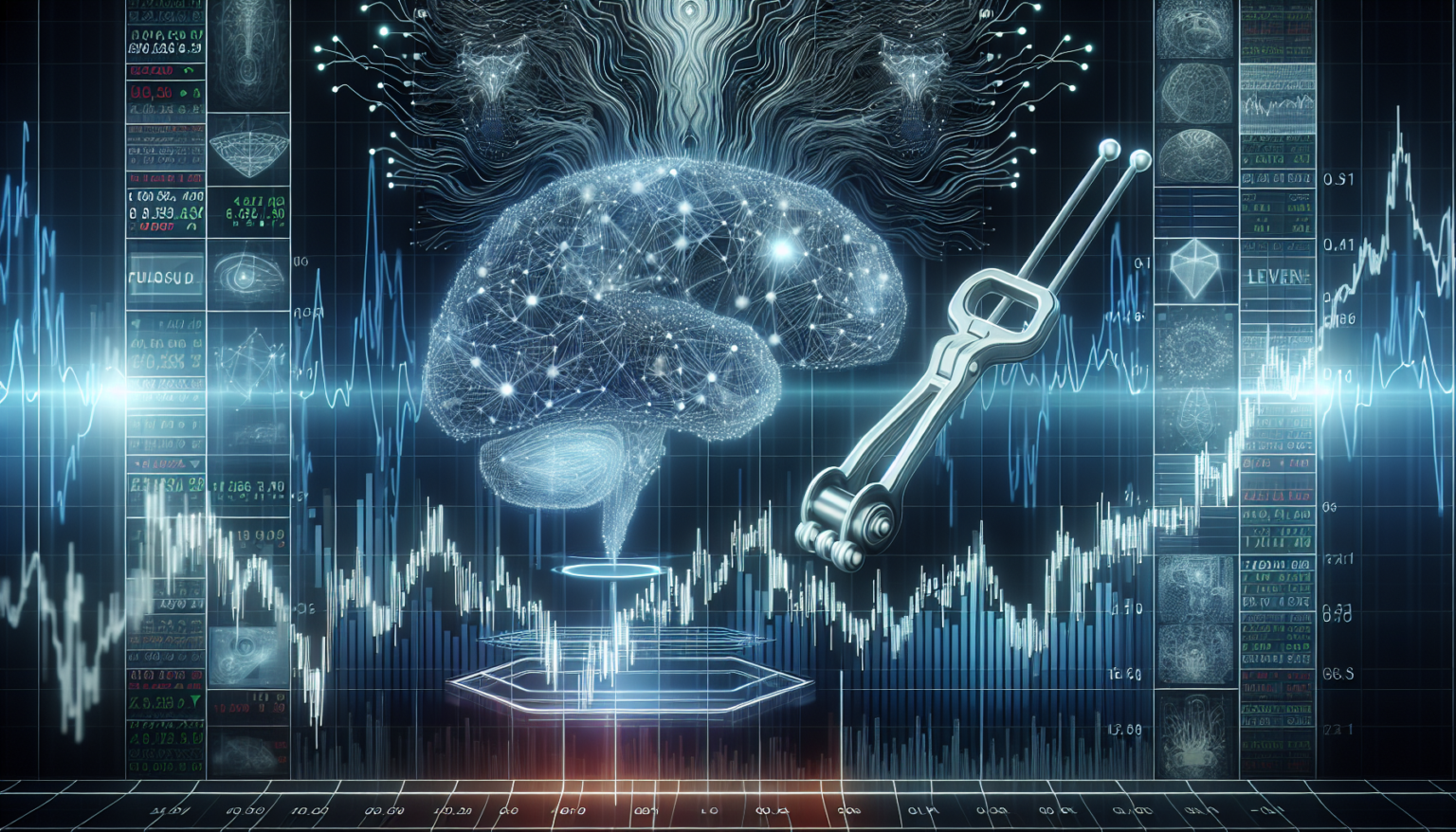The Evolution of Predictive Trading
A Brief History
Predictive trading, in essence, involves forecasting market trends to make informed trading decisions. For decades, traders relied on technical indicators, historical price patterns, and fundamental analysis to navigate the market’s complexities. As technology evolved, the dawn of machine learning and artificial intelligence brought forth a revolution in how traders analyze data. In this new paradigm, neural networks have emerged as a powerful tool, turning massive amounts of market data into actionable insights.
Understanding Neural Networks
Neural networks are inspired by the human brain’s architecture, mimicking the way neurons interact. At their core, these systems consist of layers of interconnected nodes, where each node processes input data and passes it to the next layer. The genius of neural networks lies in their ability to learn from data patterns, adapting and improving their predictions over time.
The Mechanics of Neural Networks in Trading
Input Layer: Feeding the Data
In predictive trading, the input layer of a neural network receives various forms of data. This might include historical price movements, trading volumes, and even external factors like economic indicators or news sentiment analysis.
Types of Data Utilization
– **Price Data**: Traditional closing prices, highs, and lows provide the foundation for trends.
– **Volume Data**: Understanding how many shares are exchanged can help gauge market sentiment.
– **Alternative Data**: Social media trends or news articles can enhance prediction accuracy by providing context beyond numbers.
Hidden Layers: Processing Information
Once the data is fed into the input layer, it moves through one or more hidden layers. These layers perform calculations and transformations on the input data, identifying complex patterns that less sophisticated methods might overlook. The depth of these layers can significantly affect performance, with deeper networks often yielding higher accuracy.
Activation Functions
Each node in a hidden layer employs an activation function to determine whether it should transmit its output to the next layer. Popular functions include the sigmoid and ReLU (Rectified Linear Unit), which introduce non-linearity into the model, allowing it to learn complex patterns more effectively.
Output Layer: Making Predictions
The final layer of the neural network synthesizes the processed information into predictions. For trading, this might involve predicting price movements or classifying market conditions as bullish or bearish.
Interpreting Outputs
Outputs from the model can be numerical, representing the predicted price of a stock, or categorical, indicating whether to buy, hold, or sell. Proper interpretation of these outputs is crucial, as it allows traders to take actionable steps aligned with the network’s predictions.
The Benefits of Using Neural Networks in Trading
Enhanced Prediction Accuracy
Neural networks excel in capturing nonlinear relationships within data, making them inherently more accurate than traditional models. Their ability to analyze vast datasets means they can uncover hidden signals that might escape human analysts or simpler algorithms.
Real-Time Data Processing
The financial markets are dynamic, changing continuously. Neural networks can process real-time data swiftly, adjusting predictions based on the latest information. This rapid adaptability can give traders a competitive edge, enabling them to act on emerging trends before others do.
Example of Real-Time Application
Consider a trader who uses a neural network to analyze news sentiment alongside stock prices. When a piece of news breaks, the network can quickly assess the potential impact and adjust its forecasts in real time, allowing the trader to make informed decisions within moments.
Automation and Scalability
Once trained, neural networks can run autonomously, executing trades based on their predictions without constant human oversight. This automation not only saves time but allows traders to scale their operations more effectively, managing multiple assets or strategies simultaneously.
Challenges in Neural Network Implementation
Data Quality and Quantity
One of the most significant factors influencing the success of a neural network is the quality and quantity of the data fed into it. Inaccurate or insufficient data can lead to misleading predictions. Traders must ensure they gather diverse datasets, covering various market conditions to train their models effectively.
Overfitting vs. Underfitting
Traders must also be wary of overfitting, where a model becomes too tailored to the training data it has seen, thus failing to generalize to new, unseen instances. Conversely, underfitting occurs when a model is too simplistic, failing to capture the underlying trends. Balancing these two extremes is crucial for developing a robust trading strategy.
Computational Resources
Neural networks, especially deep learning models, demand considerable computational power. Traders must invest in infrastructure that can handle extensive computations efficiently. This might involve utilizing cloud-based solutions or specialized hardware like GPUs.
Interpretability of Results
While neural networks can yield impressive predictive results, their “black box” nature can pose challenges. Understanding why a model made a particular prediction can be difficult, making it hard for traders to trust or justify their decisions. Techniques like SHAP values or LIME can help demystify the output of complex models, but they add another layer of complexity to implementation.
Future Trends in Neural Networks for Predictive Trading
Integration with Other Technologies
The future of predictive trading lies in integrating neural networks with other advanced technologies like quantum computing, which can radically enhance analytical capabilities. This collaboration could lead to even more sophisticated models capable of processing unimaginable amounts of data in real time.
Incorporating Behavioral Economics
Understanding human behavior in trading can further enhance neural network performance. By incorporating elements of behavioral economics into the models, traders can better capture irrational behaviors and market anomalies that standard financial theories might miss.
Sentiment Analysis Enhancements
As social media and online discourse continue to influence market dynamics, incorporating advanced sentiment analysis into neural network models will become increasingly crucial. Natural Language Processing (NLP) techniques can analyze social media chatter and news articles, adding an additional layer of understanding to market movements.
Ethical Considerations and Regulations
As with any technology, ethical considerations surrounding the use of neural networks in trading must not be overlooked. As models become more powerful, the potential for misuse rises, prompting calls for regulations to ensure fair trading practices. Balancing innovation with ethical standards will be essential for the sustainable growth of neural networks in finance.
Practical Steps to Get Started
Choosing the Right Tools
Selecting the right framework or library for building neural networks is crucial. Popular choices, like TensorFlow and PyTorch, offer robust capabilities and extensive community support.
Data Collection Strategies
Before diving into model creation, traders should outline a comprehensive data collection strategy. This includes determining necessary data types, cleaning data for quality assurance, and acquiring additional datasets that may provide unique insights.
Building and Training the Model
Once the data is ready, traders can start building their models. Experimenting with various architectures, hyperparameters, and training methods allows them to refine their approach and optimize performance for specific trading goals.
Backtesting and Validation
Before deploying any model in a live trading environment, thorough backtesting is essential. This process involves simulating trades based on historical data to validate model performance. Monitoring results during backtesting helps identify potential pitfalls and areas for improvement.
Staying Updated
The fields of machine learning and predictive analytics are evolving rapidly. Traders must stay abreast of the latest research, tools, and techniques to remain competitive. Engaging with communities, attending workshops, or taking online courses can greatly enhance one’s knowledge and skills in this domain.
Analytics-driven trading decisions powered by neural networks can revolutionize the way traders approach the financial markets. With the right tools, data, and strategies, anyone can harness this technology to enhance their trading outcomes significantly.








